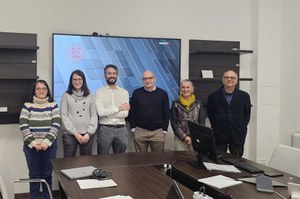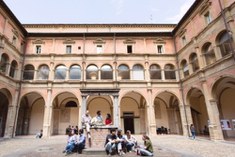The initiative for the development and utilization of renewable energy sources kicks off

The project titled "Development and Integration of Innovative Accumulations in Renewable Energy Communities - SACER” is coordinated by the Interdepartmental Centre for Industrial Research - CIRI Building and Construction of the University of Bologna. It aims to promote the utilization of renewable energy sources by fostering the development of second-generation Renewable Energy Communities (RECs) and collective self-consumption groups (GACs).
Funded under the Emilia-Romagna ERDF Regional Programme 2021-2027, the project will last 30 months and involves partner institutions such as CIDEA of the University of Parma, TEKNEHUB of the University of Ferrara, EN&TECH of the University of Modena and Reggio Emilia, and LARCOICOS, an accredited laboratory of the Ricos Consortium. Furthermore, it will engage numerous local companies including Cosmoproject, CNS - National Consortium of Services, Delta Engineering, GFC Chimica, Galletti, Bryo, and Coop Alleanza 3.0.
A primary goal of the SACER project is to drive advancement in the regional production sector through research and innovation, while advocating for and disseminating the efficient utilization of renewable energy sources. This will be achieved by supporting the establishment of second-generation Renewable Energy Communities (RECs) and Collective Self-Consumption Groups (GACs), in which electricity and heat are shared among prosumers. This type of community is particularly relevant in the Emilia-Romagna region given the widespread presence of urban heating networks.
Furthermore, the project will focus on researching optimal methods for managing energy from renewables and implementing thermal and electrical storage systems within communities. These systems serve as crucial intermediary components between electricity and heat grids, playing a vital role in maximizing the utilization of renewable sources and recovering waste heat. The project activities involve researching and engineering innovative thermal storage systems using thermochemical and phase change materials, as well as determining the best placement of electric batteries within the grid. The primary contribution of the entire project will be an open-access IT application. This application will allow the configuration and analysis of the performance of CERs (Certified Emission Reductions) and GACs (Gold Standard VERs). It will implement individual utilities, storage systems, and optimize the management of energy flow.
In particular, CIRI EC will track the energy consumption of several sample buildings. It will then establish typical time profiles of energy demand and production, encompassing both electrical and thermal aspects. These profiles will cover various types of users and buildings commonly included in CERs and GACs. Furthermore, experimental tests will be carried out on innovative full-scale prototypes of thermal storage systems at the CIRI EC research laboratories. These prototypes will be optimized through the integration of phase change materials.






